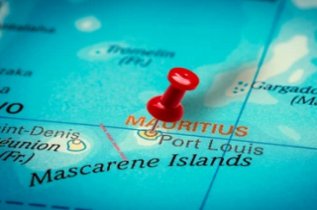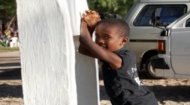|
|
Beyond its traditional maritime role, Port Louis has strategically diversified its economic base. It is the unchallenged centre of Mauritius's rapidly growing financial services sector. The city hosts numerous local and international banks, insurance companies, and investment firms, serving as a hub for offshore banking and global business operations. This sector has significantly contributed to the country's GDP and employment, attracting foreign investment and skilled professionals.
The city's economic vitality is also reflected in its bustling commercial districts, which house corporate headquarters, retail outlets, and a vibrant informal economy represented by street vendors and market traders. While facing challenges such as urban congestion and the need for continuous infrastructure upgrades, Port Louis remains committed to sustainable economic growth, with ongoing projects aimed at enhancing its connectivity, efficiency, and appeal as a regional business magnet. The true charm of Port Louis lies in its extraordinary social tapestry, a vibrant mosaic of cultures, languages, and religions coexisting in harmony. The city's population is a microcosm of Mauritius itself, comprising descendants of Indian indentured labourers, African slaves, Chinese traders, and European colonisers. This rich blend is palpable in every aspect of daily life. Religiously, Port Louis is a city where mosques stand alongside temples, churches, and pagodas. Major festivals from Hinduism (Diwali, Maha Shivaratri), Christianity (Christmas, Easter), Islam (Eid al-Fitr), and Chinese traditions (Chinese New Year) are celebrated with fervour, often involving participation from the wider community, irrespective of their faith. This cultural fluidity is a hallmark of Mauritian society, and Port Louis exemplifies it perfectly. Linguistically, the streets of Port Louis are a symphony of sounds. Mauritian Creole, a French-based creole, is the lingua franca, spoken by virtually everyone. French and English are widely used in business, administration, and education, while Bhojpuri, Mandarin, Tamil, Hindi, and other ancestral languages are still spoken within specific communities, adding further layers to the city’s linguistic richness. Daily life in Port Louis is a dynamic spectacle. Mornings begin early as commuters stream into the city from surrounding suburbs, filling offices, shops, and markets. The Central Market, in particular, is a hive of activity, with vendors hawking fresh produce, spices, textiles, and local crafts, while buyers haggle animatedly. The aroma of street food – from Indian rotis and dholl puris to Chinese noodles and seafood – permeates the air, offering a delicious insight into the island's culinary fusion. Lunch hours see offices empty as people flock to street food stalls and small restaurants, a testament to the city's informal yet efficient service economy. Evenings bring a different kind of energy. The Caudan Waterfront comes alive with diners, shoppers, and families enjoying leisurely strolls. The city's streets, which hum with traffic during the day, quiet down, though certain areas like Chinatown continue to glow with the warmth of eateries and late-night establishments. Education is highly valued, with numerous schools and tertiary institutions contributing to the city's intellectual life. Healthcare facilities are modern and accessible, catering to the needs of its diverse populace. Despite the urban challenges of traffic and population density, Port Louis retains a spirit of community and resilience, making it a truly unique place to live and experience. |
Port Louis Profile |
Port Louis Profile |
Port Louis Profile | Port Louis Profile |
Find out all about Mauritius in a series of information articles, latest daily news, videos, and images.
More >
 |

Port Louis boasts a remarkable array of tourist attractions that offer insights into its history, culture, and daily life:
Just outside of Port Louis is the Rivulet Terre Rouge Estuary Bird Sanctuary which migratory birds use during the cold months of the northern hemisphere. A protected reserve, the sanctuary has a viewing platform from where the birds can be observed with telescope. FFor those simply wanting to chill, the former vegetable patch of the French East India Company has been remodelled into the 'Jardins de la Compagnie' which are replete with vast banyan trees, statues, quiet benches and fountains. For those wanting a thrill, you can visit the gardens at night where many additional services are available. Read between the lines, but, if you're not good reading between the lines, best avoid the area you're adverse to red lights! While Port Louis thrives, with its cruise ship terminal which in 2010, being the first in the Indian Ocean to be capable of handling the largest cruise ships in the world, the city faces common challenges of urban centres, including traffic congestion, the need for sustainable waste management, and the preservation of its historical fabric amid modern development. However, Port Louis is actively addressing these issues through infrastructure projects, smart city initiatives, and urban regeneration programs, aiming to enhance the quality of life for its residents and reinforce its position as a leading financial and commercial hub in the Indian Ocean. |
 In recent decades, Port Louis has also embraced the digital revolution, fostering a burgeoning Information and Communication Technology (ICT) sector. Cyber-parks and business process outsourcing (BPO) centres have emerged, leveraging the island's well-educated, multilingual workforce and robust telecommunications infrastructure. Tourism, though dispersed across the island, heavily utilises Port Louis as a point of entry and a base for exploring Mauritian culture and history, bringing substantial foreign exchange and supporting a myriad of related services, from hotels and restaurants to artisan craft shops.
In recent decades, Port Louis has also embraced the digital revolution, fostering a burgeoning Information and Communication Technology (ICT) sector. Cyber-parks and business process outsourcing (BPO) centres have emerged, leveraging the island's well-educated, multilingual workforce and robust telecommunications infrastructure. Tourism, though dispersed across the island, heavily utilises Port Louis as a point of entry and a base for exploring Mauritian culture and history, bringing substantial foreign exchange and supporting a myriad of related services, from hotels and restaurants to artisan craft shops.



 The Caudan Waterfront: One of the most popular and modern attractions, the Caudan Waterfront is a vibrant commercial and leisure complex which, over the past two hundred and fifty years, has been home to an astronomic and meteorological observatory, workshops, quays, warehouses. The buildings have been adapted for modern use with, for example the old meteorological observatory now being a food court and restaurant. It features upscale boutiques, duty-free shops, a craft market, cinemas, restaurants, and cafes, all set against the picturesque backdrop of the harbour.
The Caudan Waterfront: One of the most popular and modern attractions, the Caudan Waterfront is a vibrant commercial and leisure complex which, over the past two hundred and fifty years, has been home to an astronomic and meteorological observatory, workshops, quays, warehouses. The buildings have been adapted for modern use with, for example the old meteorological observatory now being a food court and restaurant. It features upscale boutiques, duty-free shops, a craft market, cinemas, restaurants, and cafes, all set against the picturesque backdrop of the harbour.


